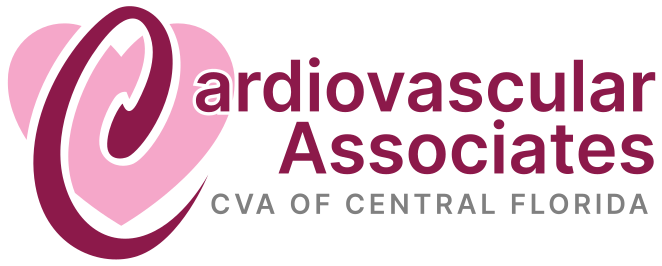Women & Heart Disease
Risk Factors for Heart Disease in Women
While heart disease is often perceived as a male health concern, it is a serious threat to women's health, particularly as they age. Several critical risk factors significantly elevate a woman's lifetime risk of developing heart disease. These include:
- Hypertension (High Blood Pressure)
Hypertension is a leading risk factor for heart disease in women. It increases the workload on the heart and arteries, contributing to their damage over time. Proper management and monitoring are crucial for reducing this risk. - Hyperlipidemia (High Cholesterol)
Elevated levels of cholesterol, particularly low-density lipoprotein (LDL) cholesterol, can lead to the buildup of plaque in the arteries. This condition significantly raises the risk of heart disease in women. Lifestyle modifications and, in some cases, medication are key components of management. - Obesity
Excess body weight, especially around the abdomen, is associated with a higher risk of heart disease. Obesity contributes to other risk factors like hypertension and diabetes. Maintaining a healthy weight through diet and exercise plays a pivotal role in reducing this risk. - Diabetes
Diabetes, particularly type 2 diabetes, significantly increases a woman's risk of heart disease. Women with diabetes face a 3 to 7 times higher risk of heart disease compared to those without diabetes. Strict diabetes management, including blood sugar control, is essential in minimizing this risk. - Lifestyle Factors
Lifestyle choices play a vital role in heart disease risk. Smoking, poor dietary habits, and physical inactivity are major contributors. Quitting smoking, adopting a heart-healthy diet, and incorporating regular exercise are effective preventive measures. - Autoimmune Diseases
Conditions like lupus and rheumatoid arthritis, characterized by systemic inflammation, elevate the risk of heart disease in women. Regular monitoring and close collaboration between healthcare providers are essential for managing this heightened risk. - Age-Related Statistics
Heart disease prevalence increases with age in women. Notably, 1 in 16 women aged 20 and older has coronary heart disease. For women over the age of 55, this rate increases to 1 in 7. Furthermore, there is a concerning trend of rising heart attack rates among younger women under the age of 55, emphasizing the importance of early awareness and risk mitigation.
Other Factors Affecting Heart Disease Risk in Women
Beyond the previously mentioned risk factors, several additional factors can increase a woman's vulnerability to heart disease. It's crucial to be aware of these factors and their implications for heart health.
- Pregnancy Complications
Certain pregnancy complications, such as preeclampsia and gestational diabetes, can elevate a woman's risk of heart disease later in life. Preeclampsia, characterized by high blood pressure and damage to other organs, can have lasting effects on cardiovascular health. Gestational diabetes, a form of diabetes that develops during pregnancy, can also increase the likelihood of heart disease in the future. Gestational hypertension, small for gestational age babies, preterm delivery, and placental abruption may also increase your risk of developing Coronary Artery Disease (CAD). - Polycystic Ovary Syndrome (PCOS)
PCOS is a hormonal disorder that affects women of reproductive age. It is associated with irregular periods, excess androgen levels, and cysts in the ovaries. PCOS, particularly when combined with being overweight or obese, can heighten the risk of heart disease. Women with PCOS should be vigilant about managing their cardiovascular health. - Menopause
Menopause, a natural phase in a woman's life, can impact heart disease risk. Early menopause (before the age of 45) or surgical menopause (before the age of 50, often due to the removal of the ovaries) can lead to changes in cholesterol levels, blood pressure, and other risk factors. These changes can increase the likelihood of heart disease. It's essential for women undergoing menopause to work closely with healthcare providers to manage these potential risks. - Chemotherapy, radiation, and other cancer treatments
Therapies for cancer such as chemotherapy and radiation agents can lead to the development of Coronary Artery Disease, Valvular Heart Disease, and weakening of heart pumping function.
Heart Disease Conditions in Women
Heart disease encompasses a broad spectrum of conditions that affect the cardiovascular system. While many of these conditions are common to both men and women, some have unique features or prevalence in women. It's essential to recognize and understand these conditions to promote early diagnosis, effective management, and improved heart health in women.
- Coronary Artery Disease (CAD)
CAD is the most prevalent form of heart disease and occurs when the coronary arteries become narrowed or blocked by cholesterol and fatty deposits. In women, CAD can present with subtle symptoms or even no symptoms at all, making it a "silent" threat. It is crucial to recognize the atypical signs, such as fatigue, shortness of breath, and discomfort in the neck, jaw, or back, in addition to chest pain. - Ischemic Heart Disease
Ischemic heart disease occurs when there is insufficient blood flow and oxygen delivery to the heart muscle. This condition can manifest differently in women, sometimes leading to misdiagnosis or delayed diagnosis. Women may experience angina (chest pain), but they are also more likely to have "microvascular disease," which affects the smaller arteries of the heart. - Heart Failure
Heart failure occurs when the heart cannot pump blood effectively, leading to symptoms like fatigue, fluid retention, and shortness of breath. Women tend to develop heart failure with preserved ejection fraction (HFpEF) more often than men. HFpEF is characterized by stiff ventricles, which can be challenging to diagnose and treat. - Arrhythmias
Arrhythmias are irregular heart rhythms that can lead to palpitations, dizziness, and fainting. Conditions like atrial fibrillation (AFib) can increase the risk of stroke in women. While AFib affects both genders, women often experience more severe symptoms. - Valvular Heart Disease
Valvular heart disease involves abnormalities in the heart valves that regulate blood flow. Women may have unique valvular conditions, such as mitral valve prolapse (MVP), which can be associated with palpitations or atypical chest pain. - Heart Attack
Heart attacks, also known as myocardial infarctions, occur when blood flow to a part of the heart is blocked, leading to tissue damage. Women may exhibit different heart attack symptoms than men, such as nausea, vomiting, and pain in the back, neck, or jaw. Recognizing these subtle signs is critical for prompt treatment. - Spontaneous Coronary Artery Dissection (SCAD)
SCAD is a rare but potentially life-threatening condition that predominantly affects women. It involves the sudden tearing of the coronary artery layers, disrupting blood flow. Diagnosis and treatment require specialized care.
Symptoms and Treatment of Heart Diseases in Women
Heart diseases in women can manifest differently than in men, making early recognition and diagnosis crucial. Early detection, prompt treatment, and ongoing management are essential in addressing heart diseases in women.
Symptoms of Heart Diseases in Women
- Chest Pain or Discomfort
While women can experience chest pain, it often differs from the classic "crushing" chest pain seen in men. Women may describe it as pressure, fullness, squeezing, or pain that can radiate to the back, neck, jaw, or stomach. - Shortness of Breath
Breathlessness, even during light activities or at rest, can be a prominent symptom. This is often accompanied by an overwhelming sense of fatigue. - Nausea or Vomiting
Nausea and vomiting, particularly during a heart attack, are more common in women and can be mistaken for other gastrointestinal issues. - Dizziness or Lightheadedness
Fainting, feeling dizzy, or lightheaded can occur due to irregular heart rhythms or reduced blood flow to the brain. - Unexplained Fatigue
Profound and unexplained fatigue is a common symptom in women with heart disease. Unfortunately, it can be dismissed as a result of aging, stress, or other factors. - Pain in Non-Chest Areas
Heart disease-related pain may manifest in unusual areas, such as the neck, jaw, shoulder, upper back, or even the abdomen. These atypical pain locations can delay diagnosis. - Palpitations
Women are more likely to experience irregular heart rhythms or palpitations, especially in conditions like atrial fibrillation. - Cold Sweats
Cold, clammy sweats can accompany a heart attack in women and may be mistaken for menopausal symptoms.
Treatment of Heart Diseases in Women
- Lifestyle Modifications
Lifestyle modifications, such as a heart-healthy diet, regular exercise, and quitting smoking can be beneficial. Learning effective stress management techniques, such as mindfulness, meditation, or yoga, can also greatly benefit heart health. Stress can increase your blood pressure and heart rate, and it can also trigger inflammation, all of which can contribute to heart disease. - Medications
Medications play a pivotal role in managing heart diseases. Depending on the specific heart condition, they may include: blood pressure drugs, statins, antiplatelet medications, and drugs to control heart rhythms, such as beta-blockers or calcium channel blockers. - Cardiac Rehabilitation
Cardiac rehabilitation programs offer structured support for women recovering from heart disease or heart surgery. These programs provide supervised exercise, education, and emotional support. Cardiac rehabilitation can help women improve their heart function, reduce their risk of future heart events, and improve their quality of life. - Invasive Procedures
For severe blockages or heart valve issues, invasive procedures like angioplasty, stent placement, or heart surgery may be necessary to restore blood flow and improve heart function.
Get Comprehensive Cardiovascular Care Designed for Women
Photo Gallery
Video Gallery
Testimonials
Everyone was polite and helpful.
The doctor was very helpful, the doctor read each of my results and made sure I understood.
Photo Gallery
Get To Know Our Cardiologists
In Search of Care? Request a Consultation Today


 Fax: 407-846-2524
Fax: 407-846-2524
